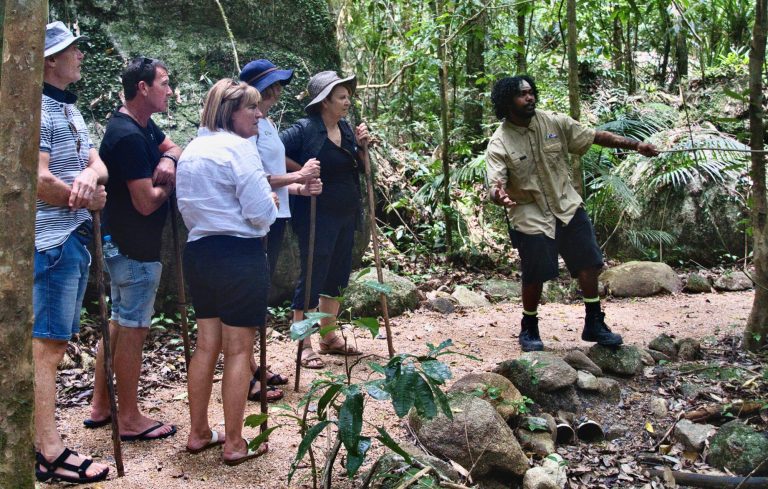Can You Truly Build Intimacy in a Long-distance Relationship After Meeting Someone on a Vacation?

Vacation sparks often feel magical—the setting is new, the energy is high, and shared experiences can create fast connections. But can that chemistry survive when the trip ends and distance begins? Meeting on a journey can give couples a strong emotional foundation, yet sustaining intimacy across distance demands consistent communication, honesty, and patience. Social media, video calls, and texting via different apps can help bridge the gap, making it possible for partners to nurture closeness even when apart.
However, true intimacy extends beyond frequent contact; it involves emotional vulnerability, shared goals, and a willingness to let the relationship evolve naturally. Challenges are inevitable when transitioning from a vacation romance to a long-distance relationship, or LDR. The reality of everyday life, possible time zone differences, and sporadic moments when you’re physically together can test both partners’ resilience and will to make the relationship work.
Both individuals must go beyond the excitement of the initial trip and invest in building trust and understanding. Having an idea about their future together is a key part of building intimacy. Periodic visits, thoughtful gestures, and openness about insecurities can strengthen the bond. Distance may complicate intimacy, but it doesn’t make it impossible. When a couple is committed, the relationship can deepen into something meaningful and lasting.
Steps to Build Intimacy in Long-distance Relationships
Use face-to-face interactions, even if they don’t occur that often, to engage in meaningful conversations, make memories, and reinforce the connection. Talk about a possible future together, especially if it involves overcoming challenges presented by distance.
As for specific steps to create intimacy, a virtual wine tasting journey is one of the most effective. Choose the same wine and talk about the aromas you smell, the notes you identify, or the texture you feel. If one or both of you don’t drink, prepare the same dish and do it with the food. Every bite or sip will allow you to discover more about each other.
Talk about ambitions, fears, and dreams. Such conversations build bridges, knitting a strong web of understanding and helping foster emotional intimacy. Shared rituals—such as watching a movie together online or celebrating monthly milestones—also give the relationship rhythm and a sense of progress despite the miles in between.
Another valuable practice is writing letters, whether digital or handwritten. Unlike quick text messages, letters allow partners to express emotions in depth and revisit words later, which strengthens emotional closeness.
Statistics About Long-distance Relationships in 2025
As many as three million US adults live apart from their spouse at one point, and three-quarters of college students have been in an LDR. As of 2025, about 16 million adults in America are in LDRs, with an average of 125 miles between them.
A survey by British bank HSBC, as reported by CNN, reveals that 1 in 50 travelers meet their significant other on board a plane. HSBC interviewed 2,150 travelers from 141 countries and asked an additional 6,000 people from the UK, the US, Hong Kong, and the UAE about their flying habits. It’s not only romantic relationships that are born in the skies: 14% of fliers made a lasting friendship, while 16% added someone to their business network.
These numbers show that distance is not necessarily a barrier to intimacy. Instead, with the right commitment, it can create opportunities for people to connect in unexpected and meaningful ways.
Psychological Dynamics of Long-distance Relationships
An individual’s attachment style contributes to the outcome of an LDR. Those with anxious attachment, for example, may struggle more with the uncertainty and require additional reassurance. securely attached individuals tend to be more resilient in navigating the ups and downs. It’s also likely that people who have a general preference for LDRs may lean toward an avoidant attachment style.
It’s crucial to set expectations about future visits and communication. Rituals like video calling every Saturday morning can be a comforting anchor in your relationship. Couples who create structured habits report higher satisfaction, as these rituals act as steady reminders of commitment.
Building intimacy also means respecting personal growth. Partners who encourage each other’s independence—such as pursuing hobbies or career goals—often find their bond strengthens instead of weakens. Balance between individuality and togetherness is the cornerstone of a lasting LDR.
Conclusion: Can Vacation Romances Become Lasting Long-distance Relationships?
Yes—intimacy in a long-distance relationship that begins on vacation is possible, but it requires more than initial excitement. Couples must replace the thrill of a holiday romance with steady practices: regular communication, meaningful shared activities, and open conversations about the future. Statistics show that millions of adults are in long-distance relationships, proving they can thrive when nurtured with care.
By combining emotional vulnerability with practical strategies—like visits, rituals, and shared goals—partners can transform a fleeting trip connection into a deep, lasting bond. For those willing to invest time, patience, and trust, a vacation spark can grow into a love story that endures across any distance.
FAQ
What are some less explored positive aspects of LDRs?
The opportunity to cultivate independence is a unique benefit of LDRs. You can maintain emotional closeness while pursuing personal goals, like starting a new hobby, signing up for a course, etc. Growing individually strengthens a couple’s bond.
What is the hardest part of an LDR?
You might feel like your lives are completely separate, but shared experiences can bridge the gap that inevitably comes with physical separation. You’ll feel closer with every moment you create together.
Can a vacation fling turn into a real relationship?
Yes, many couples begin their journey with an unexpected spark while traveling. With commitment, clear communication, and willingness to plan for the future, a vacation romance can grow into a stable and intimate long-distance relationship.
How many people are in long-distance relationships in 2025?
Research shows about 16 million adults in America are in LDRs, proving that many couples successfully make distance work with the right mindset and practices.





